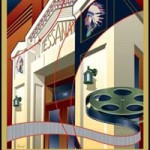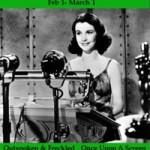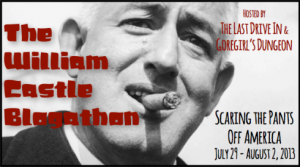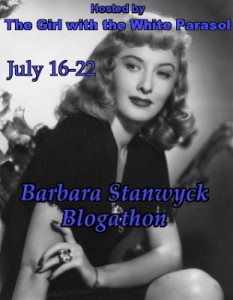Costume Designers Julian Day and Paul Tazewell Re-Imagine ‘Rebecca’ and ‘West Side Story’

As classic movie lovers, we can be a very sensitive group when it comes to messing with our favorites. Even movies that seem to get a new version for each successive generation get severely criticized by those of us who are devotees of the originals.

While Lady Gaga received a lot of acclaim for last year’s version of A Star Is Born, co-starring and directed by Bradley Cooper, our community largely dismissed the film in favor of proclaiming whether we were on Team Streisand (1976), Team Garland (1954), or Team Gaynor (1937). Some of us even expressed our preference for Team Constance, citing the precursor to the story, What Price Hollywood? (1932) starring Constance Bennett. Similarly, the Jo March we profess allegiance to might depend on a lot of factors including which cinematic version of Louisa May Alcott’s famous novel we saw first. Personally, my preferred Jo will always be June Allyson (1949) but I know there are equally passionate supporters of Katharine Hepburn (1933) and Winona Ryder (1994), and there will undoubtedly be those who align with Saoirse Ronan in Greta Gerwig’s new version of the story that will be released on Christmas Day.

Some classic films are considered so sacrosanct that even vague rumors of them being remade cause a near panic among cinephiles. Every few years I read a story about someone thinking of doing a remake of Michael Curtiz’s 1942 film Casablanca starring Humphrey Bogart and Ingrid Bergman. In 2008, there was a story that Madonna was contemplating a remake of the film set in Iraq. There were two attempts to turn the story into a Broadway musical (both failed) and most classic movie fans have mercifully forgotten the 1983 television series Casablanca starring David Soul as Rick (it was cancelled after three episodes).

There are many other classics that have been subject to remakes, sometimes successfully, sometimes less so. Two of the worst offenders, in my opinion, are Switching Channels, the awful 1988 remake of His Girl Friday (itself a fantastic remake of The Front Page) that starred Kathleen Turner, Burt Reynolds, and Christopher Reeve, and the horrendous 2008 version of The Women that starred Meg Ryan, Annette Bening, and Eva Mendes as Mary Haines, Sylvia Fowler, and Crystal Allen. Sorry, ladies, but that film was an abomination, way worse than The Opposite Sex, MGM’s 1956 attempt to turn The Women into a musical and to stupidly add men to the cast. A few years ago, as an April Fool’s Day prank on NPR, movie critic Bob Mondello convinced a lot of horrified listeners that a remake of Citizen Kane was in the works starring Keanu Reeves as a hipster version of Charles Foster Kane. The ensuing hysteria on NPR’s website showed how the moviegoing public would respond to such sacrilege.
Earlier this week, I had the good fortune to speak to two extremely talented costume designers to get the scoop on two upcoming remakes that are sure to produce a lot of tongue-wagging in the classic film community. Both films have recently completed shooting and will be released next year. After talking to these two, I can’t wait to see them.

Coming on the heels of his incredible work in Rocketman and Bohemian Rhapsody, designer Julian Day’s next project is Ben Wheatley’s new version of Alfred Hitchcock’s Rebecca (1940) which, of course, starred Joan Fontaine, Laurence Olivier, and Judith Anderson. This new take on Daphne Du Maurier’s classic novel features Armie Hammer as Maxim de Winter, Lily James as the second Mrs. de Winter, and Kristin Scott Thomas as the indomitable and terrifying housekeeper, Mrs. Danvers. Paul Tazewell, after winning a much-deserved Tony award for his excellent costume design in Lin-Manuel Miranda’s smash musical “Hamilton,” is also responsible for the stunning historical costumes in Harriet, the new film about Harriet Tubman starring the brilliant Cynthia Erivo as the Underground Railroad icon. From that he went right into creating the costumes for Steven Spielberg’s upcoming new version of West Side Story. I asked both men if they felt nervous about re-imagining these iconic characters.

Danny Miller: Julian, what does it feel like to redo such a beloved film like Rebecca?
Julian Day: Well, our film is based more on the Daphne Du Maurier novel than Hitchcock’s great movie, which I love, but it’s still, of course, a little daunting. I am a huge Hitchcock fan.
As soon as I saw that Kristin Scott Thomas was playing Mrs. Danvers, I breathed a big sigh of relief. As much as I worship Judith Anderson’s performance, Thomas seems perfect for that part.
Oh God, she’s fantastic. You need to see her. [Day looks through his phone and shows me a bunch of amazing photos of Kristin Scott Thomas as Mrs. Danvers that make me very excited about seeing the film.] Kristin is amazing in the film, as always. I really get on with Kristin and I love working with her, I’ve dressed her a few times.
Are you a fan of the costume designers of classic Hollywood? I believe Irene did the costumes for Rebecca but didn’t even receive screen credit for it.
Oh, of course, they were fantastic. And yeah, they didn’t get a lot of credit in those days.
They didn’t even have an Oscar for that category until 1948. Were there any homages to Laurence Olivier and Joan Fontaine in your designs?
We definitely wanted to base our depictions of the characters more on Du Maurier’s book but I certainly loved the way Olivier and Fontaine looked in the original. [At this point, Day shows me more photos from the film that I wish I could reproduce here. Lily James’ gowns are absolutely stunning and Kristin Scott Thomas’s Mrs. Danvers drag is exquisite.]
Oh wow, I love this progression with Mrs. Danvers.
She’s just incredible. There’s this one bit where she comes out of the shadows and Ben just focuses on her eyes which are so amazing. It was fun to do because you know Mrs. Danvers basically has this one outfit throughout the film but I changed her blouses. For me, her character is like a big bruise. She is damaged and the house is damaged, so I thought about how bruises change. They go from black to purple to blue to a kind of oak color. So all her blouses change as the movie progresses — it’s like her bruising gets worse and worse.
I am excited to see what they do with the story without the 1940 censorship restraints. I assume we’re going to learn more about Mrs. Danvers feelings about Rebecca.
Oh, yeah, just wait! We’ll talk again later!

Paul, was it a little scary to take on such a classic as West Side Story?
Paul Tazewell: It was a really exciting summer. We filmed mostly in New York with a little bit in Patterson, New Jersey. We stuck to the time period of when the original was created, the 1950s, and it was such a delight working with Steven Spielberg. I think it’s going to be a stunning film.
But is it a little nerve-wracking that you all know that many of us have every frame of the original memorized?

I hope that we’ve been able to create a parallel version of West Side Story that people will grow to love. The cast is out of this world — they’re all young and so full of life. And we have Rita Moreno in our cast, too, so that’s also a big plus and a connection to the original film. It was a great group all around. There’s no question that the original film is beloved and I hope our film just adds to that experience in the same way seeing a new stage production of West Side Story does, which we’re actually going to be treated to very soon.
Frankly, knowing that Rita Moreno was the only actual Puerto Rican actor in the original cast makes me excited about seeing a more diverse group in the new movie.
Absolutely, you’re going to see a lot of diversity in our cast. I look forward to talking with you when that film comes out late next year.
Stay tuned to this space for more on these exciting if somewhat controversial films. Do you have any lines in the sand on this topic? What classic movie remake would have you picketing the theater?
…..
–Danny Miller for Classic Movie Hub
You can read all of Danny’s Classic Conversation Articles Here
Danny Miller is a freelance writer, book editor, and co-author of About Face: The Life and Times of Dottie Ponedel, Make-up Artist to the Stars. You can read more of Danny’s articles at Cinephiled, or you can follow him on Twitter at @dannymmiller.













































































































